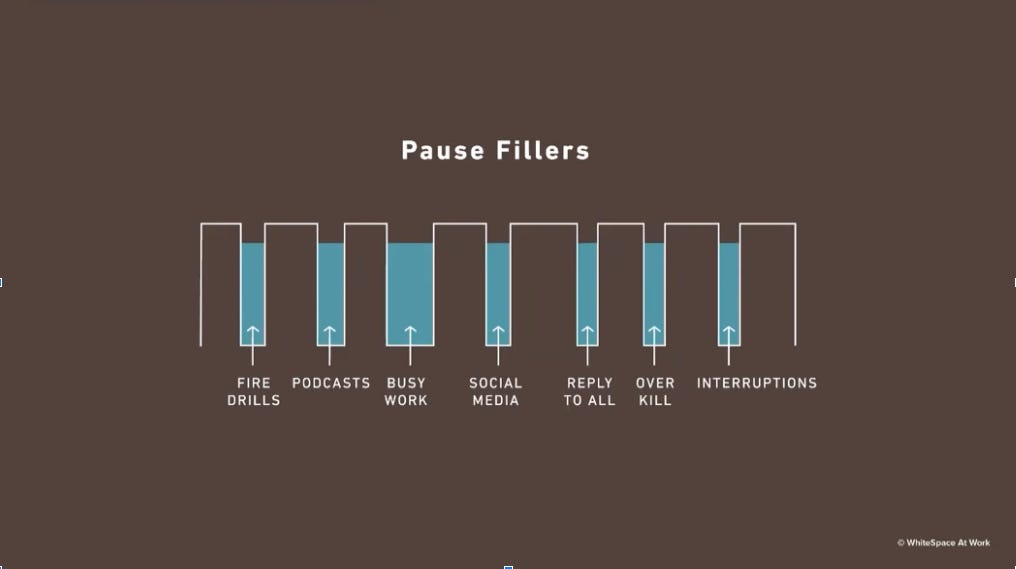We talk about burnout as if it’s a personal failing—a lack of resilience, poor work-life balance, or the inability to manage stress. But study after study tells us otherwise: burnout is not just an individual issue. It is an environmental one. And while individuals have agency in mitigating its effects, organizations are the root cause. If we want sustainable solutions to burnout, we have to shift our focus from only looking at personal fixes to designing systemic change.
What Burnout Actually Is (And What It’s Not)
Burnout is not just feeling tired. It is not synonymous with depression. It is a chronic condition that results from prolonged exposure to work environments that are unsustainable. The bottom line is that wasteful work is wasteful energy and it’s crushing your best people.
According to a recent report from Indeed, 52% of workers self-identify as burned out. That’s not a problem with personal resilience—that’s an organizational crisis.
We need to stop taking burnout personally. Instead, we should be looking at the structural causes:
Lack of space to think, breathe, or recover
A culture that values busyness over effectiveness
Workloads that exceed human capacity
Unclear goals, expectations, and constant interruptions
A relentless sense of urgency that makes everything feel like a fire drill
The Power of Whitespace
One of the most effective ways to prevent burnout on your team is by integrating whitespace into organizational culture. Author Juliet Funt describes whitespace not as meditation or mindfulness—”it’s the unstructured time employees need to process, ideate, and recharge.” When was the last time you had time to think? When organizations intentionally build in natural pauses, burnout is held at bay. Without it, burnout is inevitable.
Whitespace is a business tool, not a luxury. It’s the difference between employees who are reactionary and employees who are strategic.
When work is spacious, flowing, and tied to meaning, the conditional for burnout can’t creep in. When the environment is frantic, overloaded, and transactional, burnout, quiet quitting, dysfunction, and turnover are fueled.
The Four Thieves of Time
Many leaders unknowingly contribute to burnout by encouraging behaviors that, on the surface, seem productive but ultimately lead to overload. We also all have natural inclinations and different work styles that when harnessed well, lead to great results and help us feel in flow- but when overdone, become the fuel for burnout.
These are the four thieves of time:
Feels like: Striving for Excellence
-> Becomes Perfectionism: The urge to perfect everything, refining endlessly rather than shipping and iterating.Feels like: Gathering Information
–> Becomes Overload: Staying in a loop of research, learning, and analysis rather than taking action.Feels like: Drive
–> Becomes Overdrive: Always building, pushing, and expanding without taking a moment to assess if it’s sustainable.Feels like: Energizing Activity
–> Becomes Frenzy: Constant multitasking, moving fast, and staying busy rather than being effective.
The danger is that these behaviors feel like contributions and virtues, but in reality, they keep people stuck in high-stimulation, low-impact work.
The Illusion of Urgency
Not everything is urgent, but in many organizations, it feels like everything is. Leaders should regularly ask: What percentage of your work actually requires immediate attention? Juliet Funt defines three types of urgency in her book, A Minute To Think:
Not time-sensitive at all: The majority of tasks fall into this category but are framed as urgent due to cultural habits.
Tactically time-sensitive: The faster it’s done, the better the business outcome (e.g., responding to a live customer issue).
Emotionally time-sensitive: Feels urgent due to curiosity, anxiety, or pressure, but has no real business consequence (e.g., answering a Slack message immediately because it’s flashing).
Organizations need to have open conversations about urgency and set clear norms for what requires immediate action versus what can wait.
How To Create More Whitespace At Work
Our culture makes it hard to pause. Stillness feels uncomfortable, so we instinctively reach for “pause fillers”—emails, busywork, or another back-to-back meeting. The result? We stay stuck in reactivity instead of making intentional choices.
1. Spot Your “Pause Fillers”
Notice what you automatically do when faced with a moment of stillness. Do you check Slack? Open another tab? Jump into a task without thinking? These habits keep you in a loop of overstimulation. Break the cycle:
Practice a 2-minute pause. No phone. No planning. No fixing. Just sit with the discomfort. This get’s easier- even enjoyable over time.
Use whitespace as a strategic tool. Clarity comes in the quiet.
2. Design Your Day for Better Focus
Limit default meeting times to 15, 25, or 45 minutes. This forces efficiency while creating built-in breathing room.
Block off “meeting-free” zones in your calendar to protect deep work.
Turn off notifications: Schedule blocks in your day to check and respond to email and messages. Switching your focus at every “ding” means nothing gets your full attention.
3. Cut the Filler Work
Non-essential work clogs your day. How much time do you waste:
Searching for information?
Perfecting slide decks?
Chasing down answers?
Get ruthless:
✔ Standardize processes—use templates and automation.
✔ Define what “good enough” looks like—stop over-polishing.
✔ Reduce decision fatigue—document clear guidelines.
4. Work in the Open
Hidden conversations and scattered knowledge create chaos. Instead:
Make information easy to find—transparent documentation builds trust.
Stop one-off side chats—they lead to misalignment and duplicate work.
Share decisions clearly—avoid unnecessary follow-ups and meetings.
The less you chase, the more you create. Make space for work that actually moves the needle.
The more you practice making time for white space, the easier it becomes. It may also become your greatest source of creativity, energy, and reconnection to what energizes you.
I want to hear from you:
What’s the hardest part about creating space for deep work in your day?
Where do you waste the most time at work—meetings, emails, or chasing information?
If you could wave a wand to create space for you and your team to do more meaningful work, what would you reduce or eliminate?
What would you do with more whitespace in your week?
Do you know a leader who is should be sharing their wisdom with the world? I’d love to interview them for Thought(ful) Leaders.
Send me a note at jessica@jessicalynnmacleod.com. I can’t wait to hear from you!
Related Programs
Reset, my 8-week Group Coaching program is open now and will be capped at 25 participants. You can learn more about it here and add your name to the waitlist.
I love working with teams to create shared language around vision and value delivery while develop the essential operating principles required for teams to thrive in the distributed and remote work era. You can learn more about how I can help your organization here.









